The development of any metered dose inhaler (MDI) presents a considerable technical challenge. However, when producing a generic item, wherein the emphasis of the project is on matching an existing innovator product, these issues are greatly magnified. In particular, the actuator component of an MDI presents an opportunity to optimise the performance match of a generic formulation to meet current regulatory requirements.
This paper discusses various methods, such as computed tomography and scanning electron microscopy, which can be used to assess innovator actuators and enable a matched generic actuator to be produced. In addition, the paper considers the key factors involved in matching pharmaceutical performance, such as spray orifice diameter and the ability of a clear component strategy — as well as an excellent working relationship with development partners — to reduce product development timelines.
Design controls
With the inclusion of a clear design control strategy, the regulatory burden of producing a generic product can be reduced and progress to market accelerated. Although design controls are mandated for the US market, their inclusion for non-US projects provides a clear and simple roadmap for product development, with the option of a clean device transition into the US if later required.
Adopting a modular approach means that elements such as dose counters can be integrated into multiple products with a minimum of additional work. As always, suitable expertise is critical for timely and efficient delivery.
Reverse engineering
The starting point for any generic actuator project should always be derived from the innovator product. If the appropriate design parameter data are not available, techniques such as CT (computed tomography) X-ray and SEM (scanning electron microscopy) can provide an enhanced view of critical areas of the innovator actuator to highlight any unique features, such as the spray orifice (Figure 1).
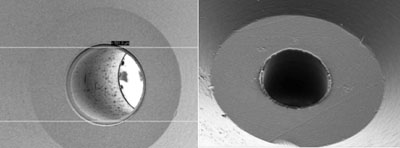
Figure 1. Example SEMs of the spray cone and spray orifice profile of two different innovator actuators
The use of CT scanning provides an accurate model of the critical dimensions and geometry of the innovator actuator. However, such techniques can often be expensive and hence limited to a small sample size, which can be a particular issue when an innovator product utilises several injection moulding tool suites to produce components with a range of dimensions. To overcome this, dimensional metrology presents an opportunity to inspect a large number of innovator components.
Care should be taken to match the expansion chamber and spray cone geometry of the innovator actuator to best ensure a subsequent pharmaceutical match (Figure 2). Consideration should also be given to the material composition of the innovator actuator and to ascertain whether any coatings or specialised plastics have been used, either of which might indicate product sensitivity to occlusion or triboelectic charging.
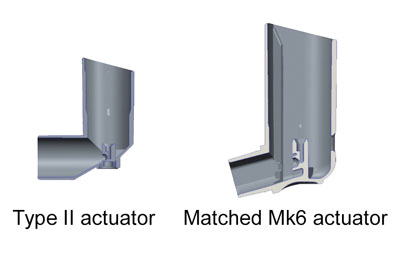
Figure 2. Examples of matched stem block designs
The nature of some inhalation formulations may highlight orifice occlusion as a possible issue during routine use of the device. A final element to complete an evaluation is an assessment of the innovator actuator from an intellectual property standpoint, as it may contain protected features.
Feasibility partner
The selection of a container closure system (CCS) for generics can involve the inclusion of components from a wide variety of suppliers as efforts are made to match the innovator product. The actuator must, therefore, remain flexible throughout development to fulfil the needs of the project for activities such as component selection experiments or clinical supplies.
The choice of an experienced and engaged development partner, able to provide flexibility in supply requirements while still meeting the level of rigour required for clinical supply, is therefore critical in accelerating development and a smooth transition into commercial-scale production. Although the choice of the future commercial partner may appear to give advantages during the transition to full-scale production, during the feasibility stage, flexibility is key.
Pharmaceutical match and optimisation
Critical to the success of any generics product is the ability to match the particle size distribution of the innovator product. Optimisation of the actuator spray orifice presents an excellent opportunity to fine-tune this distribution. A reduction in spray orifice diameter will lead to an increase in FPM (fine particle mass) and a reduction in throat deposition, whereas an increase in spray orifice diameter will lead to a reduction in FPM and an increase in throat deposition (Figure 3).
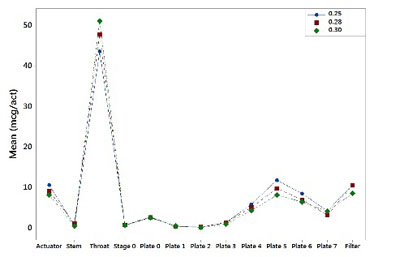
Figure 3. APSD (aerodynamic particle size distribution) performance by spray orifice diameter (mm)
Spray orifice diameter is, however, also a key factor in product occlusion potential, and a larger spray orifice diameter might be required to increase the robustness of the inhaler in the hands of the patient.
Throat deposition can be further controlled through accurate alignment of the spray: a central spray will result in reduced throat deposition. The alignment of the actuator spray orifice and stem block in relation to the mouthpiece is therefore critical to the function of the component.
The stem socket diameter of the actuator must be matched to the stem tip diameter of the aerosol unit to avoid prefire during packaging and to ensure that the aerosol is retained by the actuator stem block during normal use — while retaining a low enough removal force that the ability of the patient to wash the product, or an analyst to perform pharmaceutical testing, is not compromised.
The exact tolerance depends on a number of factors, such as the material composition of the actuator and stem, and their surface finishes. Multiple actuator variants may be required to account for the evaluation of different valve types during feasibility stage experiments.
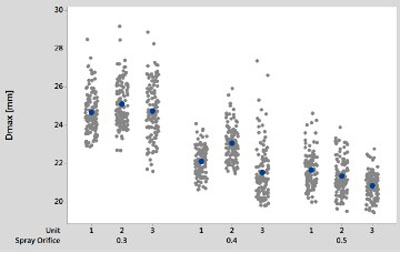
Figure 4. Spray pattern diameter (Dmax) by spray orifice size
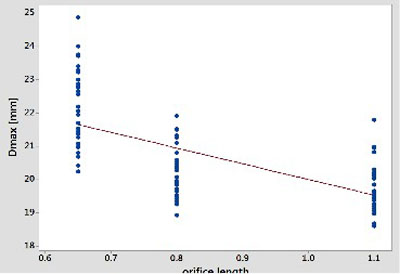
Figure 5. Spray pattern diameter (Dmax) by orifice length (mm) at a constant orifice size
The quality of the spray orifice can significantly affect pharmaceutical performance. Oval, overhanging or otherwise malformed features at the front of the orifice can lead to poor spray alignment. Flash present on the back of the spray orifice can also result in atypical pharmaceutical performance. The selection of smaller spray orifice diameters, longer spray orifice jet lengths or a downwardly angled spray orifices can be particularly challenging.
Spray orifice quality issues can be controlled by a careful moulding process, mould sequencing and orifice pin design. A tool designer experienced in actuator mould design and a capable moulder can greatly increase the chances of quality componentry being produced. The higher initial outlay involved with an experienced moulding tool manufacturer is often more than repaid by time and quality savings, rather than the multiple iterations inevitable from a tool designer inexperienced in actuator tooling.
If it is simply unfeasible for an experienced mould designer to be contracted for the mould design, sourcing componentry such as spray orifice pins and stem socket pins from an experienced toolmaker can avoid some potential issues.
Owing to the lead time required to fabricate the components necessary to injection mould different actuator configurations, care should be taken at the start of the project to establish that all the required variants are available to maintain momentum throughout the duration of the project. Again, an experienced and flexible development partner is key to ensuring the smooth supply of appropriate components.
A further complication for the US market is the requirement to match the spray pattern and spray geometry of the innovator product. Although significant determinants of spray pattern and spray geometry derive from the valve and formulation, some control is granted through the adjustment of the spray orifice dimensions (Figures 4 and 5). However, extended spray orifice jet lengths, particularly in combination with small spray orifice diameters, can impact manufacturing capability because of the delicate pins required to form these features.Product improvement/patient familiarity
Patient familiarity can be key to the success of a generic product, giving both prescribers and patients the confidence to transfer to the generic product. The introduction of externally mounted dose counters or indicators can require significant changes to the actuator’s external dimensions, resulting in a bulky profile.
A top-mounted dose counter or indicator extends the hand span required for operation. As an example, the 3M Integrated Dose by Dose Counter enables a counting mechanism to be included within an existing actuator body, maintaining a lineage to traditional and familiar designs.1
Commercial scale-up
Commercial scale-up should be considered throughout the feasibility and development stages of a generic product development project. Options to potentially reduce manufacturing costs are often well worth investment. In particular, reducing the number of configurations used and having a clear documentation strategy will yield dividends.
Conclusion
The development of actuators for generic MDIs is a technically challenging process that requires significant expertise. The growing market trend towards lower cost generic products means that companies need experienced partners to develop robust generic products that meet the requirements of the current regulatory landscape.
The most qualified partners will be able to demonstrate significant experience in formulating, developing and gaining successful registration of multiple MDI products. A full understanding of the role that key actuator parameters play on the pharmaceutical performance provides the opportunity to fine tune products without impacting the container closure system, avoiding the significant delays that would result.
Reference
1. http://solutions.3m.com/wps/portal/3M/en_WW/3M-DDSD/Drug-Delivery-Systems/Technologies/Inhalation/dose-counter/.




